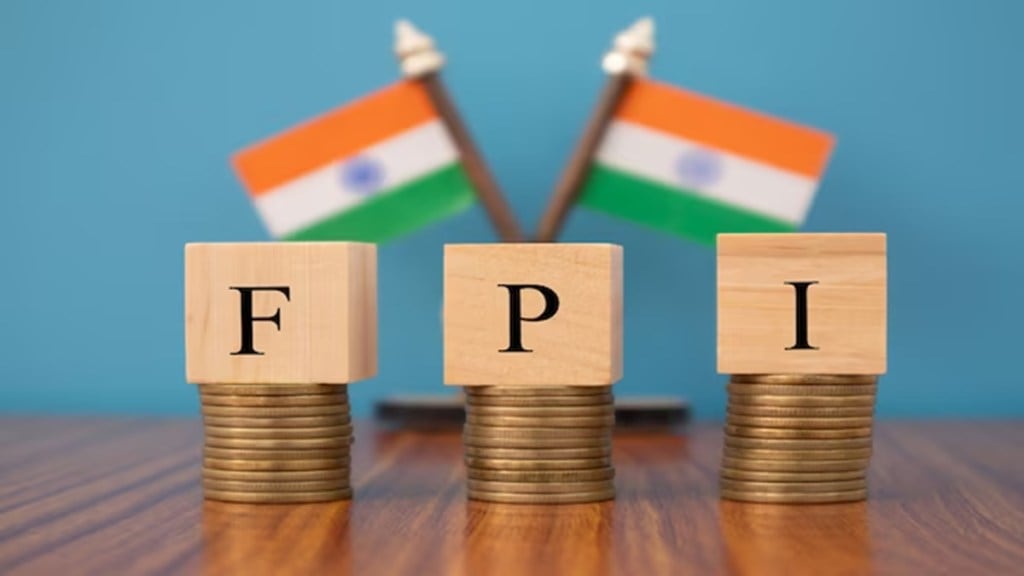After selling aggressively for over a month, foreign portfolio investors (FPIs) have slowed down in November, as the ‘sell-India-buy-China’ theme does not seem to be playing out as it was anticipated earlier. In addition, the initial euphoria of Donald Trump’s victory in the US elections seems to be waning, as they would prefer to wait for his policy decisions in January.
So far in November, they have sold shares worth Rs 25,942 crore ($3.08 billion)—less than one-third of the Rs 94,017 crore ($11.18 billion) they sold in October.
“…it is expected that FIIs will reduce their selling as we near the end of the calendar year. Fresh allocations or significant investments are likely to occur once there is greater clarity regarding the Trump administration’s policies,” said Vipul Bhowar, senior director of listed investments at Waterfield Advisors.
While experts agree that the recent escalation in the Ukraine-Russia war could change things suddenly, like the sell wave that came in the last hour of Tuesday’s trading when FIIs sold shares of Rs 3,411 crore, most believe that the earnings disappointment has been more or less priced in.
Since late September, the selling activity has been an effect of high valuations in India, coupled with weak quarterly earnings. Global factors such as Trump’s victory, rising US bond yields, geopolitical tensions in the Middle East, and attractive valuations in China have also been weighing on Indian equities, said market analysts.
“The relentless FPI selling has been triggered by the cumulative impact of three factors: one, the high valuations in India; two, concerns regarding the earnings downgrade; and three, the Trump trade,” said V K Vijayakumar, chief investment strategist at Geojit Financial Services.
In the November fortnight, financial services and oil & gas stocks continued to be the hardest hit, while sectors such as information technology, construction, and healthcare managed to see some inflows during the first fortnight of the month, according to NSDL data.
FPIs pulled out Rs 7,092 crore ($840 million) from financial services stocks, including banks, and Rs 7,214 crore ($855 million) from shares of oil & gas companies. Automobile and fast-moving consumer goods (FMCG) companies also saw withdrawals of Rs 4,411 crore ($523) and Rs 3,589 crore ($425), respectively.
At the same time, FPIs continued to buy Indian equities worth Rs 9,931 crore in the primary market, which helped cushion the selling spree in the cash market. This influx is expected to increase with big IPOs NTPC Green Energy, National Securities Depository (NSDL), ONGC Green Energy, and Satluj Jal Vidyut Nigam (SJVN) expected to hit the market soon.
Despite the pace of FPI selling slowing down, the outflows so far in November have turned FPIs into net sellers of Rs 19,351 ($2.23 billion) from buyers in 2024.
The outflows of Rs 70,963 crore ($8.49 billion) from the financial services, where FPIs have the highest allocation, have weighed on FPI flows for 2024 the most. This is followed by the oil & gas sector, which has seen withdrawals of Rs 39,382 ($4.69 billion) so far in 2024.
Bhowar further said that FPIs have been reducing their weightage in mature sectors when growth would be closer to our nominal GDP and allocating capital to high-growth businesses. For example, FPIs have been increasing allocation in capital market themes such as asset management companies (AMCs) and exchanges.
Analysts are also anticipating an increase in FPI flows from the new framework put in place by the Reserve Bank of India and the Securities and Exchange Board of India for reclassifying FPIs as FDIs. This framework is seen as a more flexible option for foreign investors with lower barriers to entry. FPIs would be able to hold larger stakes in Indian companies without the need for immediate divestment if they cross the prescribed limit of 10%.
